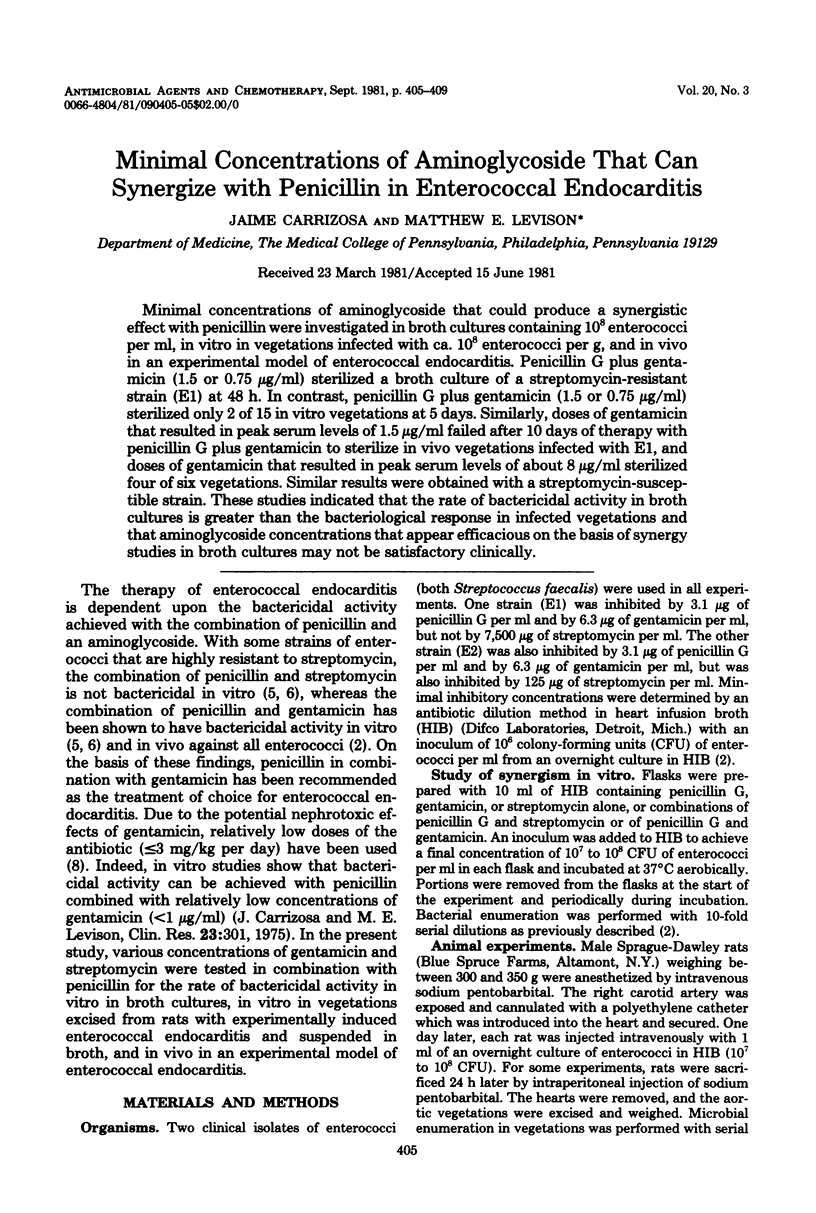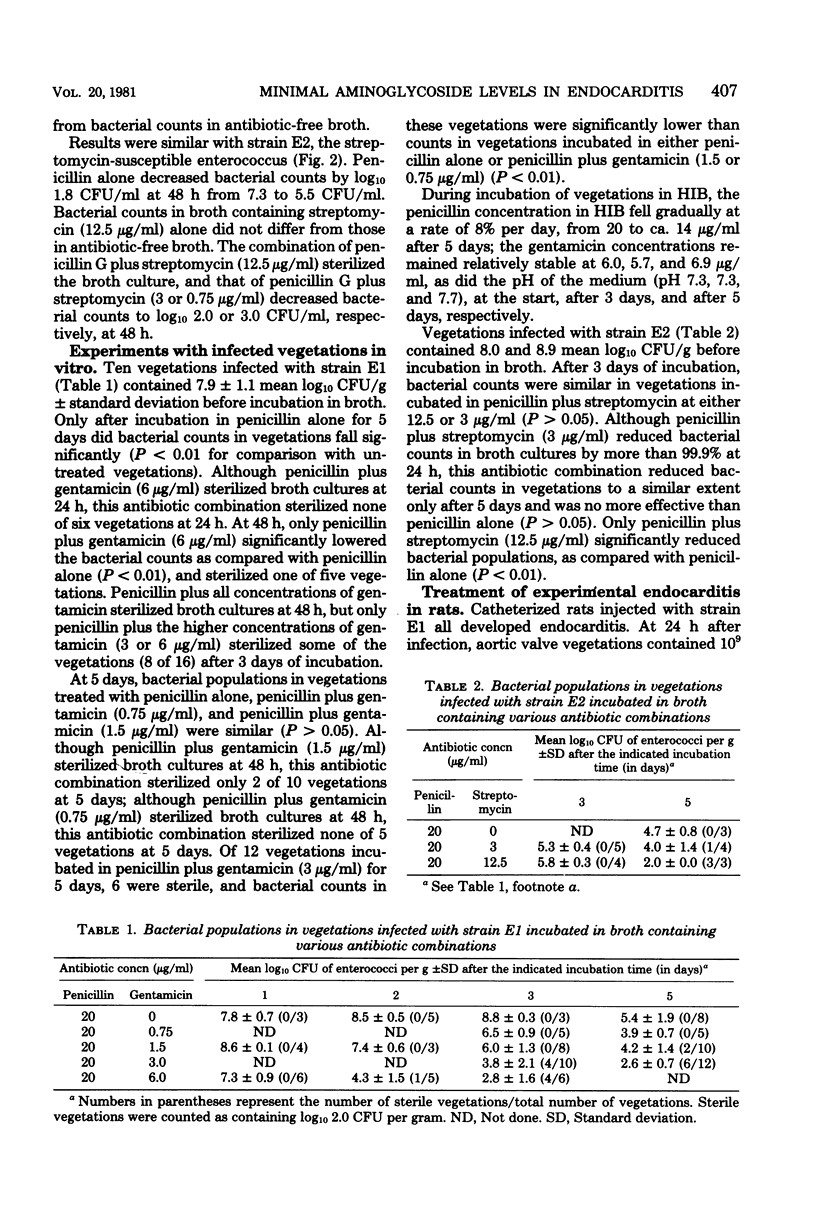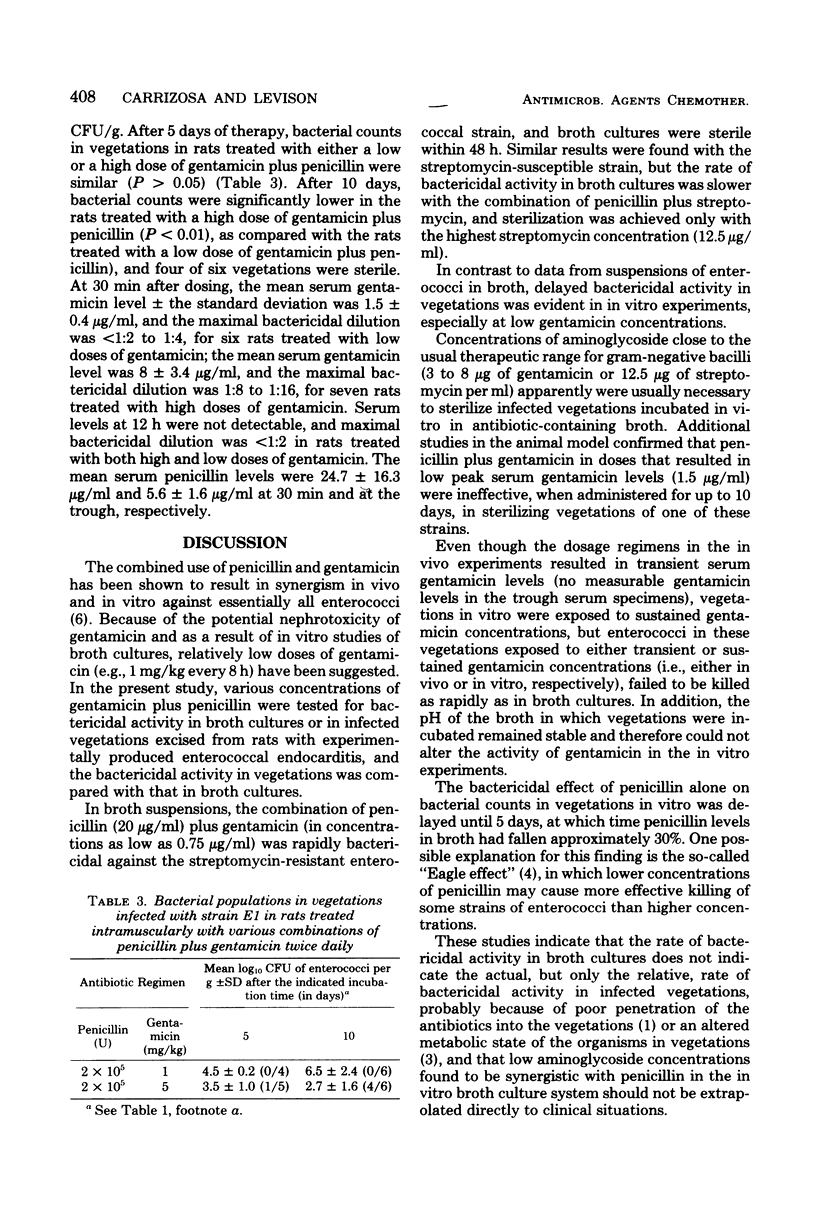Abstract
Minimal concentrations of aminoglycoside that could produce a synergistic effect with penicillin were investigated in broth cultures containing 10(8) enterococci per ml, in vitro in vegetations infected with ca. 10(8) enterococci per g, and in vivo in an experimental model of enterococcal endocarditis. Penicillin G plus gentamicin (1.5 or 0.75 microgram/ml) sterilized a broth culture of a streptomycin-resistant strain (E1) at 48 h. In contrast, penicillin G plus gentamicin (1.5 or 0.75 microgram/ml) sterilized only 2 of 15 in vitro vegetations at 5 days. Similarly, doses of gentamicin that resulted in peak serum levels of 1.5 microgram/ml failed after 10 days of therapy with penicillin G plus gentamicin to sterilize in vivo vegetations infected with E1, and doses of gentamicin that resulted in peak serum levels of about 8 micrograms/ml sterilized four of six vegetations. Similar results were obtained with a streptomycin-susceptible strain. These studies indicated that the rate of bactericidal activity in broth cultures is greater than the bacteriological response in infected vegetations and that aminoglycoside concentrations that appear efficacious on the basis of synergy studies in broth cultures may not be satisfactory clinically.
Full text
PDF




Selected References
These references are in PubMed. This may not be the complete list of references from this article.
- Barza M., Weinstein L. Penetration of antibiotics into fibrin loci in vivo. I. Comparison of penetration of ampicillin into fibrin clots, abscesses, and "interstitial fluid". J Infect Dis. 1974 Jan;129(1):59–65. doi: 10.1093/infdis/129.1.59. [DOI] [PubMed] [Google Scholar]
- Carrizosa J., Kaye D. Antibiotic synergism in enterococcal endocarditis. J Lab Clin Med. 1976 Jul;88(1):132–141. [PubMed] [Google Scholar]
- Durack D. T., Beeson P. B. Experimental bacterial endocarditis. II. Survival of a bacteria in endocardial vegetations. Br J Exp Pathol. 1972 Feb;53(1):50–53. [PMC free article] [PubMed] [Google Scholar]
- Kirby W. M. Antibiotic synergism against enterococci. J Infect Dis. 1970 Nov;122(5):462–463. doi: 10.1093/infdis/122.5.462. [DOI] [PubMed] [Google Scholar]
- Santoro J., Levison M. E. Rat model of experimental endocarditis. Infect Immun. 1978 Mar;19(3):915–918. doi: 10.1128/iai.19.3.915-918.1978. [DOI] [PMC free article] [PubMed] [Google Scholar]
- Weinstein A. J., Moellering R. C., Jr Penicillin and gentamicin therapy for enterococcal infections. JAMA. 1973 Feb 26;223(9):1030–1032. [PubMed] [Google Scholar]


